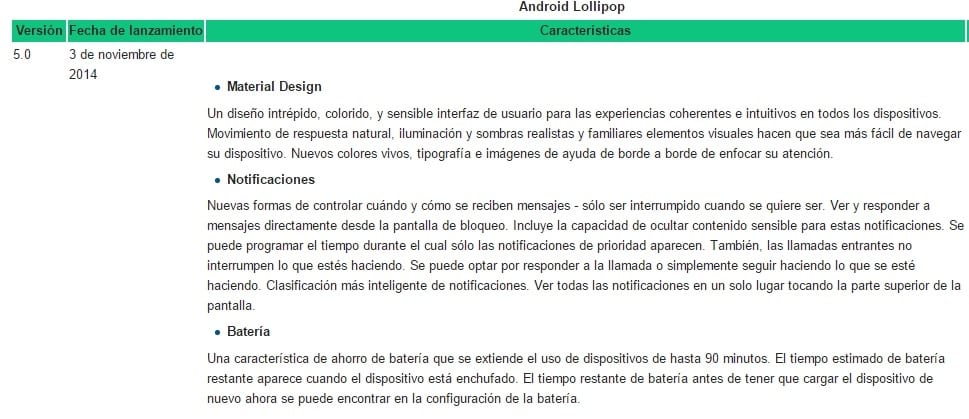Almost eight years ago, the first version of the leading operating system in the mobile phone market came out. Sure, most of you didn't get a chance to try the first beta version or even the first versions of Android. For that, we have prepared the following list of all the official versions of Android in which we review, from start to finish, their characteristics and appearances.
Android Beta
It was released on November 5th 2007. There is really not much to talk about regarding the first beta of this operating system, since like all betas it only served to test its correct and complete operation. The SDK was released on November 12, 2007.
Android 1.0 Apple Pie
It was released on September 23, 2008. The first device to hit the market with this operating system was the HTC Dream. Although it may seem somewhat historical compared to today's versions, it came quite well equipped.

HTC Dream: First phone to hit the market with version 1.0
It included Android Market, synchronization with Gmail and a player for YouTube videos among others. Applications that, although nowadays seem essential things on any smartphone, at that time represented a new stage in the telephone industry. Here is a table with the applications installed in Android 1.0:
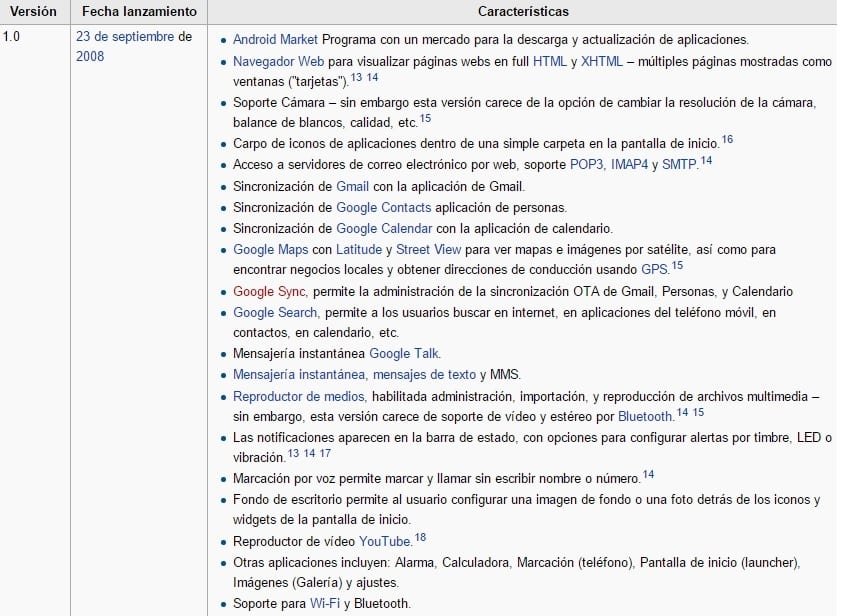
Applications that came with version 1.0
Android 1.1 Banana Bread
As the only terminal that had the android operating system was the HTC Dream, said update only worked for this terminal. It was released on February 9, 2009 without much change. Resolved bugs and changed the API.
Android 1.5
It took just over two months for the next version to be released. On April 30, 2009, they included new features and again corrections that favored the user. I leave you a table that reflects the news that they included:
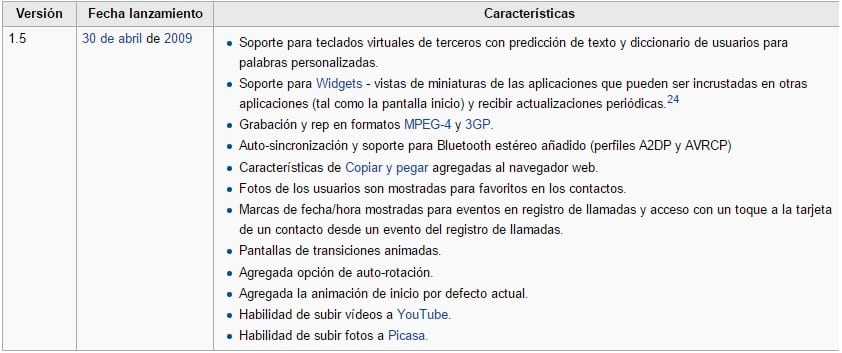
Changes in version 1.5

Home screen version 1.5
Android 1.6 Donut
Little to comment on this update. It came out on September 15, 2009 with some details that improved user interaction with the terminal. Here is a screenshot of what the home screen of this version looked like:

Home screen version 1.6
Android 2.0 and later
They emerged from October 26, 2009 to September 21, 2011. Probably the best known was the Android 2.3.x Gingerbread since it accumulates 7 different versions. Most of the changes are concentrated in version 2.3.0 / 2.3.1, since in later versions (up to 2.3.7) there are only bug fixes y performance improvement. The commented changes are:
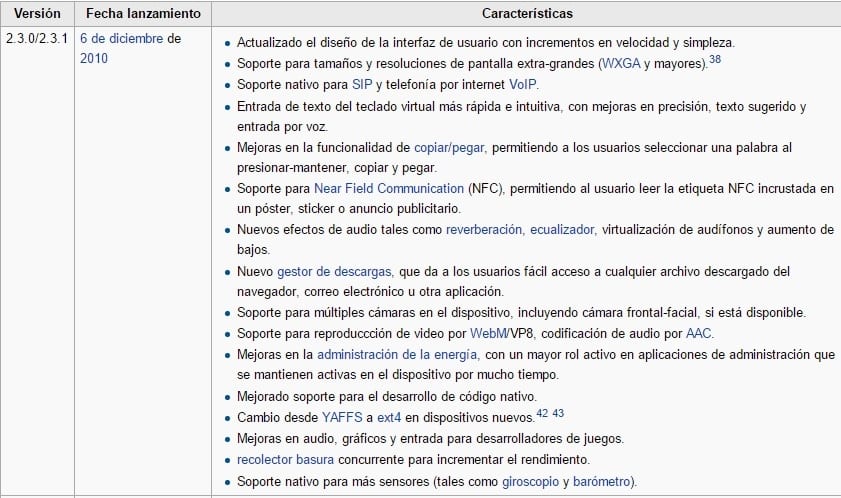
Features and changes in version 2.3.0
Android 3.x Honeycomb
The Android 3.0 Honeycomb SDK came out on February 22, 2011. The main feature to comment on is that this update is exclusive for tablet. The first tablet to feature version 3.0 was Motorola Xoom. Here is a table of specifications:

Features that version 3.0 had

First tablet with Android 3.0
Android 4.0.x Ice Cream Sandwich
Its SDK came out on October 19, 2011. It was the first Android for which its managers declared it "the first version that was theoretically compatible with any device" after version 2.3. Its main characteristics are:

Updates that were included in version 4.0.0
4.1 Android Jelly Bean
On June 27, 2012, the first version of this operating system was released, focused on optimizing performance and improving the user experience. It included advantages such as tactile anticipation, triple-buffered and a speed of 60 fps. The Nexus 7 was the first device to run this version.
Android 4.2 Jelly Bean (Gummy Bear)
There is no notable novelty compared to the previous one. The only thing to tell is the anecdote behind his presentation. It was to be announced at an event in New York on October 29, 2012, but was suspended by Hurricane Sandy. Instead of re-announcing a new date for the event, they announced it with a press release.
4.3 Android Jelly Bean
It was launched on July 24, 2013 and debuted with the second generation Nexus 7 on July 30, 2013. Here are the main changes:
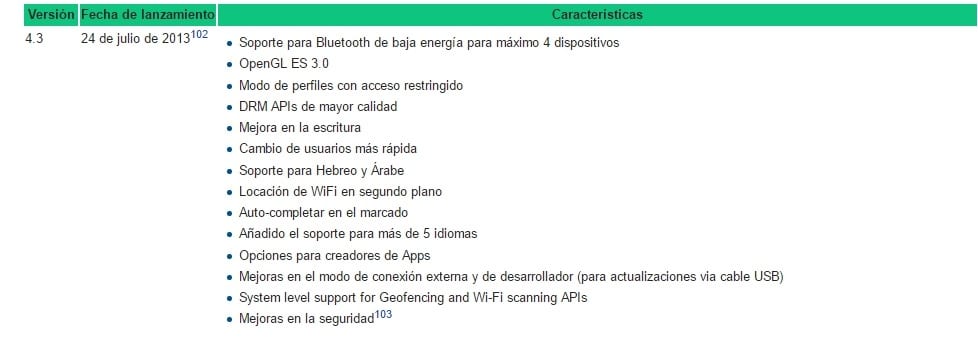
Most relevant features of version 4.3
4.4 Android KitKat
The added options are much more interesting. Printing via WiFi, shortcuts for a greater fluency or arrangements of battery optimization they were the most significant.
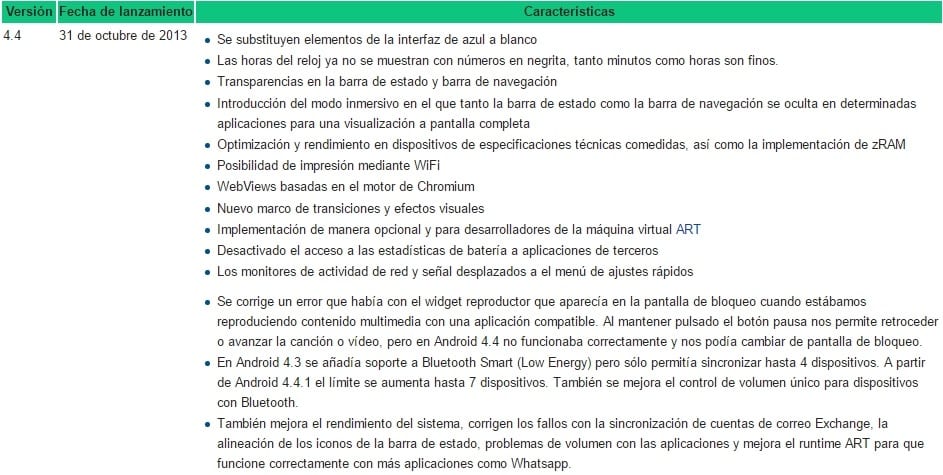
Android 4.4.0 Features
Android Lollipop 5.0
It is the latest Android update so far. It began to be released in December 2014. Shortly after, it began to be distributed 5.0.1 Lollipop and the version 5.0.2.
On April 21 Google began enabling Android 5.1.1 and, during the 2015 Google I / O developer conference, it was announced Android M , the successor to Lollipop.
Here is a table with the most important features of Android 5.0:
